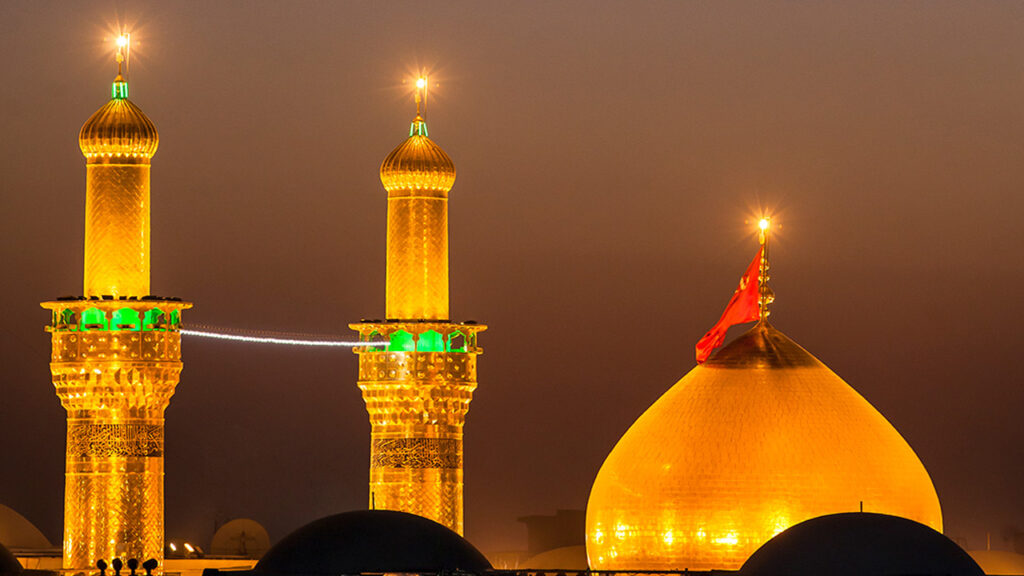Karbala, the city of martyrdom and redemption, occupies a prominent place in the hearts of Muslims and they long for it when they are thousands of miles away from it. It is the place in which the father of the martyrs, Imam Al-Hussain Ibn Ali Ibn Abi Talib was martyred on the tenth of Muharram in the year 61 AH / 680 AD in the famous historical incident of Al-Taf.
Regarding the history of Al-Hussain Shrine, which goes back to ancient times, historical sources say that the first building that housed the immaculate tomb dates back to the year 65 AH / 685 AD, and after nearly two centuries, the Abbasid Caliph al-Muntasir Billah 247 AH / 861 AD renovated the tomb and in the fifth century AH Al-Hassan bin Fadl built a wall surrounding the shrine.
Al-Hussain Shrine consists of a courtyard, a hall, a hallway, and an inner garden, and in the middle of it is the holy shrine. The dome is located above the mausoleum and is surrounded by two minarets painted with gold. The Iraqi architecture mastered its construction and became one of the verses of Islamic architecture.





